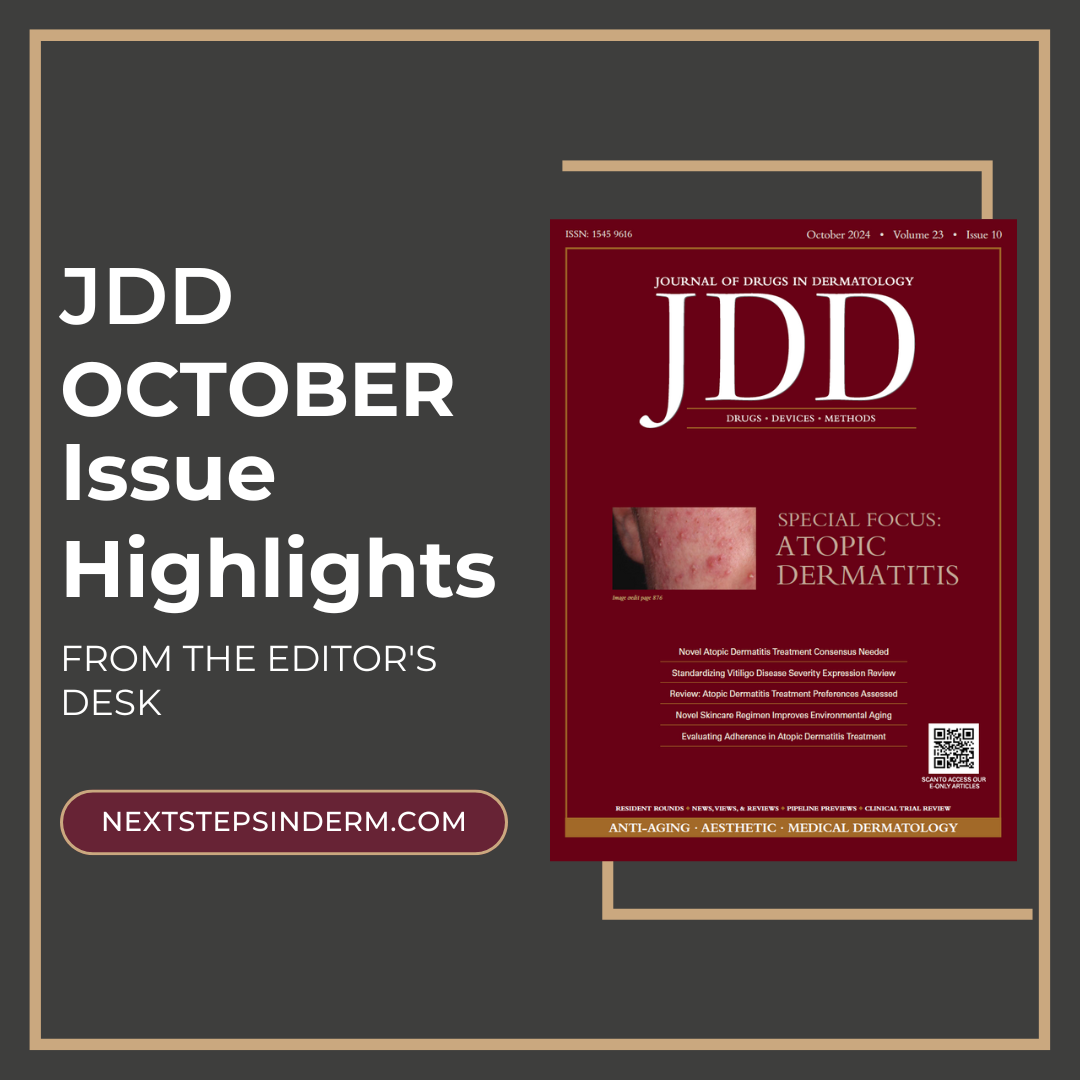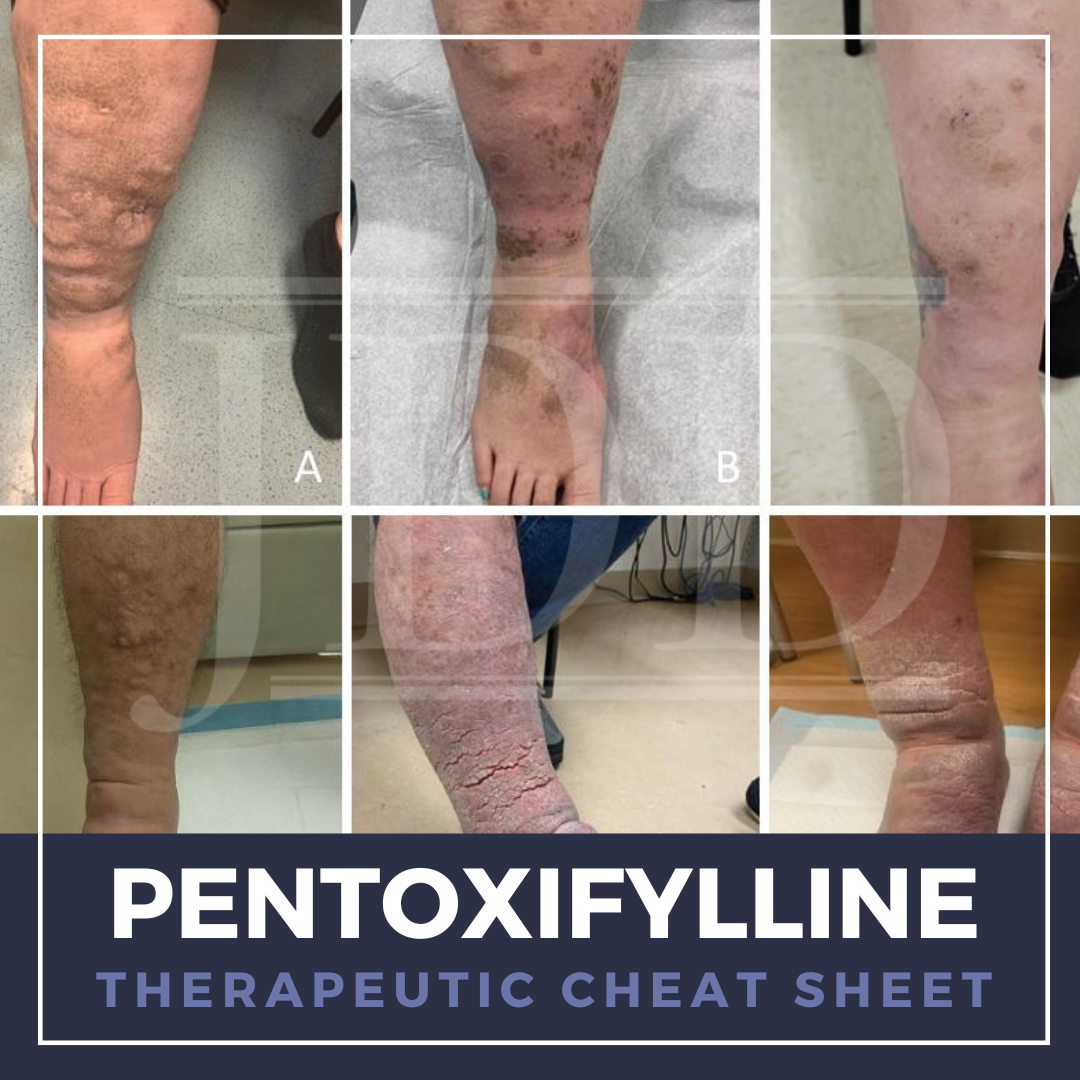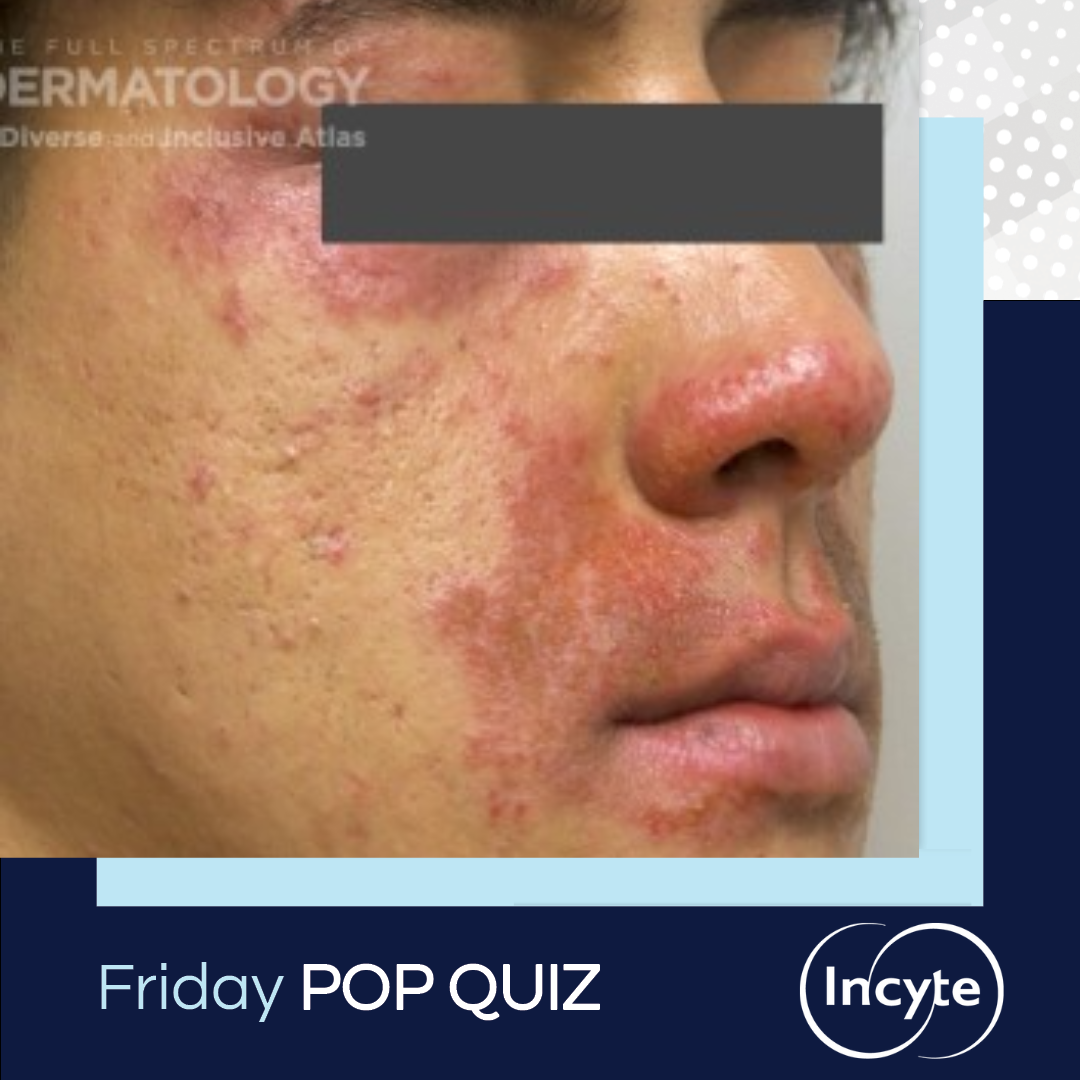Friday Pop Quiz 10/4/2024
 A 23-year-old female presents with itchy and irritated rash in the image. The rash began in her late teens. She has a family history of similar rash in her mother. Which histocompatibility antigen is most likely in this patient?
A. HLA-Cw2
B. HLA-Cw6
C. HLA-B51
D. HLA-B27
E. HLA-Bw35
To find out the correct answer and read the explanation, click here.
Brought to you by our bra …
A 23-year-old female presents with itchy and irritated rash in the image. The rash began in her late teens. She has a family history of similar rash in her mother. Which histocompatibility antigen is most likely in this patient?
A. HLA-Cw2
B. HLA-Cw6
C. HLA-B51
D. HLA-B27
E. HLA-Bw35
To find out the correct answer and read the explanation, click here.
Brought to you by our bra …
 A 23-year-old female presents with itchy and irritated rash in the image. The rash began in her late teens. She has a family history of similar rash in her mother. Which histocompatibility antigen is most likely in this patient?
A. HLA-Cw2
B. HLA-Cw6
C. HLA-B51
D. HLA-B27
E. HLA-Bw35
To find out the correct answer and read the explanation, click here.
Brought to you by our bra …
A 23-year-old female presents with itchy and irritated rash in the image. The rash began in her late teens. She has a family history of similar rash in her mother. Which histocompatibility antigen is most likely in this patient?
A. HLA-Cw2
B. HLA-Cw6
C. HLA-B51
D. HLA-B27
E. HLA-Bw35
To find out the correct answer and read the explanation, click here.
Brought to you by our bra … 

 October's Journal of Drugs in Dermatology Editor's Picks offer an exciting look into cutting-edge research, with a special focus on atopic dermatitis and several related skin conditions. This month’s selections dive deep into groundbreaking studies, ranging from innovative treatments for acne and environmental skin aging to advancements in hyperhidrosis research using machine learnin …
October's Journal of Drugs in Dermatology Editor's Picks offer an exciting look into cutting-edge research, with a special focus on atopic dermatitis and several related skin conditions. This month’s selections dive deep into groundbreaking studies, ranging from innovative treatments for acne and environmental skin aging to advancements in hyperhidrosis research using machine learnin …  The latest trend for social media’s skincare enthusiasts is using bottled water to wash the face. Vogue interviewed dermatologists for their take on whether there’s any evidence to say that replacing tap water with bottled water in a skin cleansing routine has any benefit.
Dr. Blair Murphy-Rose pointed out that contaminants from unfiltered water may irritate dry, sensitive skin as well as t …
The latest trend for social media’s skincare enthusiasts is using bottled water to wash the face. Vogue interviewed dermatologists for their take on whether there’s any evidence to say that replacing tap water with bottled water in a skin cleansing routine has any benefit.
Dr. Blair Murphy-Rose pointed out that contaminants from unfiltered water may irritate dry, sensitive skin as well as t …  Pentoxifylline is a methyl-xanthine derivative traditionally used to treat symptoms of peripheral vascular disease and has emerged as a valuable therapeutic agent in dermatology for its anti-inflammatory and immunomodulatory properties. We continue our series, Therapeutic Cheat Sheet, with a closer look at pentoxifylline, which is FDA-approved for the treatment of intermittent claudication and is …
Pentoxifylline is a methyl-xanthine derivative traditionally used to treat symptoms of peripheral vascular disease and has emerged as a valuable therapeutic agent in dermatology for its anti-inflammatory and immunomodulatory properties. We continue our series, Therapeutic Cheat Sheet, with a closer look at pentoxifylline, which is FDA-approved for the treatment of intermittent claudication and is …  A 24-year-old female patient presents with groups of itchy and tender small red papules around the eyes, nostrils, and mouth. Which of the following treatments is the first-line treatment used to treat severe cases of this condition?
A. Oral doxycycline for 6-12 weeks
B. High dose isotretinoin
C. Topical erythromycin gel
D. Topical tacrolimus ointment
E. Topical metronidazole
T …
A 24-year-old female patient presents with groups of itchy and tender small red papules around the eyes, nostrils, and mouth. Which of the following treatments is the first-line treatment used to treat severe cases of this condition?
A. Oral doxycycline for 6-12 weeks
B. High dose isotretinoin
C. Topical erythromycin gel
D. Topical tacrolimus ointment
E. Topical metronidazole
T …